-
First-of-its-kind CO2 sensor network deployed in Oakland

The City of Oakland will be ground zero for the first urban sensor network to provide real-time, neighborhood-by-neighborhood measurements of carbon dioxide and other air pollutants; the prototype network, being installed by chemists at the University of California, Berkeley, will employ forty sensors spread over a twenty-seven square-mile grid
-
-
Greater L.A. to heat up an average 4 to 5 degrees by mid-century
A groundbreaking new study shows that temperatures in the Los Angeles region to rise by an average of 4 to 5 degrees Fahrenheit by the middle of this century, tripling the number of extremely hot days in the downtown area and quadrupling the number in the valleys and at high elevations
-
-
Significant sea-level rise in a 2-degree warming world
Sea levels around the world can be expected to rise by several meters in coming centuries, if global warming carries on; even if global warming is limited to 2 degrees Celsius, global-mean sea level could continue to rise, reaching between 1.5 and 4 meters above present-day levels by the year 2300
-
-
California coastal infrastructure at risk from rising sea levels
An exhaustive study by the National research Council finds projects that the sea level off most of California is likely to rise about one meter over the next century, an amount slightly higher than projected for global sea levels; this will place much of the state coastal infrastructure at risk, because significant development along the coast — such as airports, naval air stations, freeways, sports stadiums, and housing developments — has been built only a few feet above the highest tides; for example, the San Francisco International Airport could flood with as little as 40 centimeters of sea-level rise
-
-
Seeping Arctic methane to pose serious problems for Florida coastline
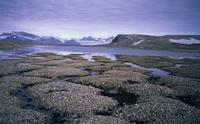
Large quantities of methane gas are buried under the Arctic permafrost; the melting of ice caps in the Arctic causes this gas to escape into the atmosphere through vents; until recently, cryosphere (frozen soil and ice) has served to plug or block these vents, but thawing conditions have allowed the conduits to open, and deep geologic methane now escapes; methane is a very strong greenhouse gas, and its presence in the atmosphere has grown three times faster than carbon dioxide since the industrial era
-
-
nCircle’s new solution offers coverage for six SCADA suppliers
Critical infrastructure is designated by DHS and the North American Reliability Corporation (NERC) as the assets, systems, and networks so vital to the United States that their incapacitation or destruction would have a debilitating effect on security, national economic security, and public health or safety; nCircle offers a security solution which covers vulnerabilities from six SCADA equipment suppliers
-
-
Carbon capture and storage likely to cause earthquakes
Carbon capture and storage, or CCS, is a major component of the world’s greenhouse gas reduction strategy; to make a significant contribution to emission reduction, however, CCS would need to operate on a massive scale, potentially sequestering upward of 3.5 billion metric tons of CO2 each year; researchers say that the injection of massive quantities of CO2 would be likely to induce small temblors which would break the reservoirs’ seals and release the stored CO2 into the atmosphere
-
-
Automated pavement crack detection and sealing system to extend roadways life
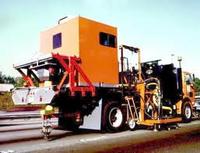
Researchers from the Georgia Tech Research Institute developed a prototype automated pavement crack detection and sealing system; in road tests, the system was able to detect cracks smaller than one-eighth-inch wide and efficiently fill cracks from a vehicle moving at a speed of three miles per hour
-
-
New research into flood impacts in the South of England -
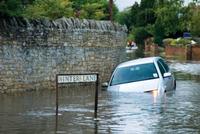
Researchers have developed and applied a method for understanding the effects and impacts of coastal flooding across the south coast of the United Kingdom, which could contribute to more effective flood forecasting, defense design, and land use planning
-
-
Explaining extreme months
Two months in Midwest history — March 2012 and December 1889 — stand out as the warmest winter months in more than a century of weather records; scientists investigated why these months, separated by 123 years, were so exceptional
-
-
Quick-curing concrete for infrastructure, mining disaster recovery
A quick-curing concrete can be sprayed to reinforce structures — buildings, runways, tunnels, bridges, dams – damaged by an act of terror or natural disaster; the spraying can be done almost immediately, before the structure fails catastrophically, providing safety for rescue workers who risk their lives minutes after disasters hit, and for still stranded in or near the damaged structure
-
-
New research to improve protection and recovery from major floods
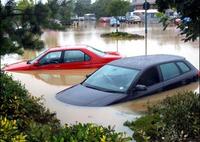
As parts of the United Kingdom suffer further flooding with more heavy rain forecast, three research projects funded by the Engineering and Physical Sciences Research Council (EPSRC) could radically change the way U.K. government and local authorities prepare for and respond to floods, mitigating future risks
-
-
Fire risks to increase in some regions of the world
Climate change is expected to disrupt future fire patterns around the world, with some regions, such as the western United States, seeing more frequent fires within the next thirty years; at the same time, fire activity could actually decrease around equatorial regions, particularly among the tropical rainforests, because of increased rainfall
-
-
Hurricane Ike damage analysis point to vulnerable Texas bridges
Preliminary results from a new research show more than a dozen Gulf Coast bridges on or near Galveston Island would likely suffer severe damage if subjected to a hurricane with a similar landfall as Hurricane Ike but with 30 percent stronger winds
-
-
Ancient design concept leads to new ideas for building durable bridges
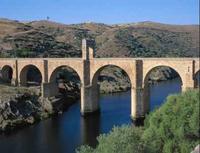
Engineers combine an ancient concrete arch form, dating back to the Roman empire, with a composite shell to create bridge beams which are designed to last 100 years
-
- All
- Regional
- Water
- Biometrics
- Borders/Immig
- Business
- Cybersecurity
- Detection
- Disasters
- Government
- Infrastructure
- International
- Public health
- Public Safety
- Communication interoperabillity
- Emergency services
- Emergency medical services
- Fire
- First response
- IEDs
- Law Enforcement
- Law Enforcement Technology
- Military technology
- Nonlethal weapons
- Nuclear weapons
- Personal protection equipment
- Police
- Notification /alert systems
- Situational awareness
- Weapons systems
- Sci-Tech
- Sector Reports
- Surveillance
- Transportation
Advertising & Marketing: advertise@newswirepubs.com
Editorial: editor@newswirepubs.com
General: info@newswirepubs.com
2010-2011 © News Wire Publications, LLC News Wire Publications, LLC
220 Old Country Road | Suite 200 | Mineola | New York | 11501
Permissions and Policies
Editorial: editor@newswirepubs.com
General: info@newswirepubs.com
2010-2011 © News Wire Publications, LLC News Wire Publications, LLC
220 Old Country Road | Suite 200 | Mineola | New York | 11501
Permissions and Policies
